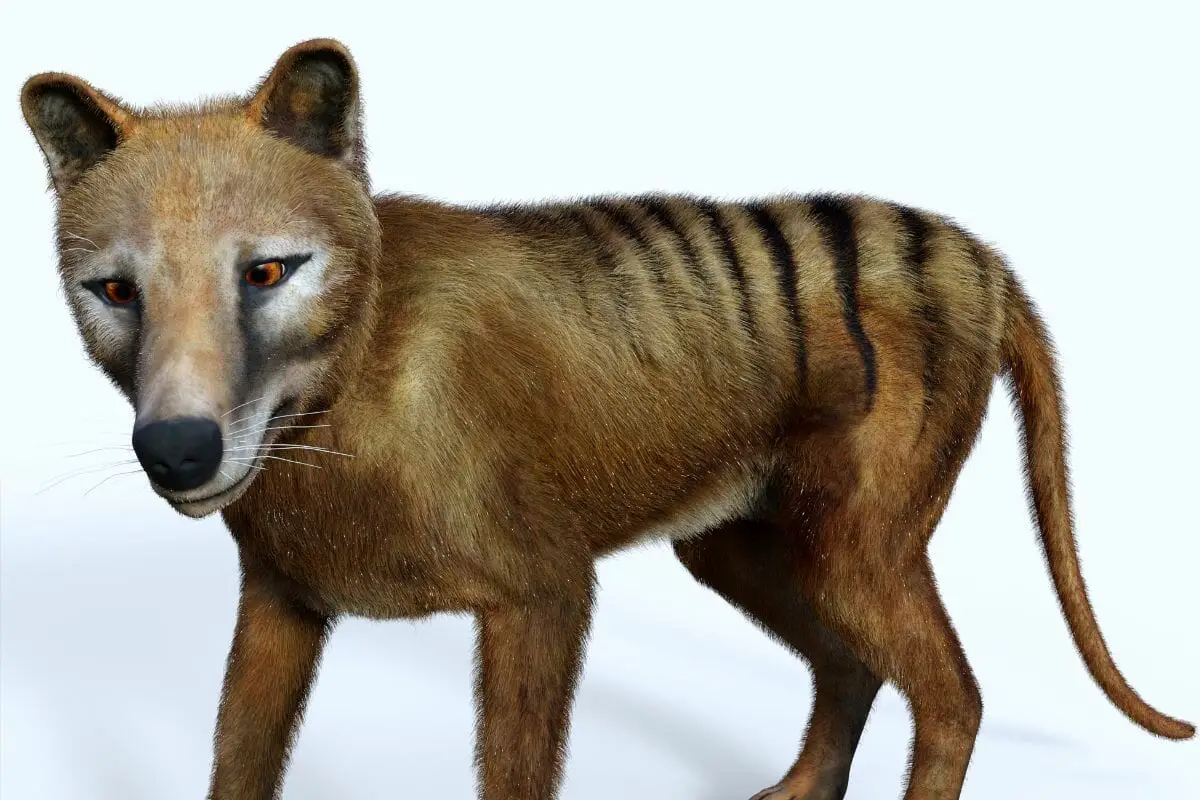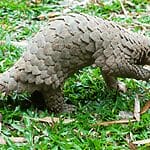The Tasmanian tiger was once one of the most fearsome creatures in the Australian outback, famed for its striped back and hindquarters, and its presence in the food chain.
However, after numerous problems, the species eventually went extinct during the early 20th century.

Despite numerous reported sightings each decade, and whispers of reintroduction back into the wild, the future of the Tasmanian tiger still appears nonexistent.
But just how true is this, and what hope could there be for a reintroduction of the species in years to come?
What Was The Tasmanian Tiger?
Also known as the thylacine, the Tasmanian tiger was a canine-like creature – similar to a dingo – that was found on mainland Australia, Tasmania, and New Guinea, where it sat high atop the food chain as one of the region’s primary carnivorous predators.
Was It Aggressive?
While little is actually known about the temperament of the wild Tasmanian tiger, records of captive animals have led people to believe that the creature was shy and retiring.
However, these findings are considered inconclusive, mainly as there is no comparison with wild animals.
As far as diet and hunting style goes, many believe that it would have been similar to its cousin, the Tasmanian devil – possessing a voracious appetite, and a ferocious hunting style, where they would hunt for food in small packs.
What Did They Eat?
While the specific diet is not entirely known, evidence suggests that they would hunt for smaller mammals, including kangaroos, wallabies, wombats, possums, and potoroos.
They were also capable of consuming large quantities of meat, possessing large stomachs that once full could sustain them for long periods.
Why Did They Go Extinct?
There were many reasons for the extinction of the Tasmanian tiger,(see also: The Thylacine (Tasmanian Tiger) Became Extinct In The 1960s… Or Did It?) ranging from disease, to human presence.

Human Expansion
As European settlers arrived on Tasmania and mainland Australia, the creation and expansion of settlements resulted in Tasmanian tigers being killed, wounded, and starved.
As well as this, they were considered dangerous predators – especially for children and livestock – and as such, bounties were paid for their culling, an act that occurred nearly to their extinction in the 1800s.
Habitat Destruction
With human expansion came the destruction of their natural habitats, namely the forests and shrublands. This led to a destruction and dispersal of their natural prey, depriving them of viable food sources, and interfering with their natural way of life.
Diseases
Diseases also became rife, due in part to the presence of European settlers, and also due to the domestic and wild animals that were introduced over the decades.
Cats, dogs, and livestock all carried diseases that the Australian ecosystem had never seen before, as did other wild creatures introduced by scientists some decades later.
Competition
Due to their similarities with dingoes, Tasmanian tigers also faced widespread competition for food and territory.
This led to them losing out on prey, losing their habitats, and eventually losing their hold at the top of the food chain.
Do They Still Exist?
This is a question that has inspired and inflamed the imaginations of people for decades, and the fact remains that there have been numerous unconfirmed sightings over the years.
That being said, none of these sightings have been backed up by evidence, and as such the creature has become more akin to a cryptid in recent decades – just like Bigfoot or the Loch Ness Monster.
Despite this, there are many groups of enthusiasts who attest that the Tasmanian tiger still exists in small pockets throughout Australia, Tasmania, and New Guinea – which has led to numerous investigations and scouting expeditions over the past few decades.
Unfortunately, this was all to no avail.
Are Scientists Looking To Resurrect The Species?
Similarly, there has been constant chatter in the scientific community, as well as the communities dedicated to finding the Tasmanian tiger, that scientists are attempting to resurrect the thylacine with a view to reintroducing it back into the animal kingdom.
This has of course been trialed with other extinct creatures, with the most notable proposal in recent years being the intended reintroduction of the wooly mammoth – wherein they would use frozen, preserved DNA found in permafrost to inseminate the embryo of a female elephant.
But how realistic is this for the Tasmanian tiger?
Reintroduction
It seems the answer to this question is yes.
According to news outlets, scientists at the University of Melbourne have been working closely with US biotech company Collossal to recreate the Tasmanian tiger, with a view to reintroducing this famed creature back into the wild.
How Is This Possible?
This might sound like something from a science fiction movie, but this whole thing was made possible thanks to the remains of the last Tasmanian tiger – which were discovered inside a cupboard.
Previously donated to the Tasmanian Museum & Art Gallery in 1936, the remains were apparently lost due to carelessness – with a simple error in the cataloging process and their misplacement in a cupboard saw them remain hidden for nearly 90 years.
What Is The Process?
From this viable female carcass that, surprisingly, has remained relatively intact – despite being lost for decades, and apparently taken on an Australian tour in the 30s – and as such, scientists have already begun the process to create a brand new tiger from these remains.
They have successfully sequenced the genome for a young Tasmanian tiger, with the hope of then using this as a blueprint to bring the species out of extinction.
The plan is to take cells from similar creatures – such as the fat-tailed dunnart – and convert them into the cells of a thylacine – a process that has already been backed by $3 million dollars in financial support thus far.
Is This ‘Resurrection’ Ethical?
One form of criticism regarding this proposed procedure is whether or not it would be ethically viable to essentially ‘play God’ in such an extreme way.
One source, Jeremy Austin, an associate professor from the Australian Centre for Ancient DNA, has stated irrefutably that the process of ‘de-extinction’ is the work of a fairytale, and something that is not viable in reality.
Others, such as Corey Bradshaw – the professor in global ecology at Flinders University – have questioned how they could possibly create the necessary genetic variations to create a healthy species, even if they managed to grow a brand new Tasmanian tiger.
All in all, many scientists across the board consider this project to be unethical in one sense or another, and more about the scientists gaining media attention and excitement, rather than conducting actual science.
Final Thoughts
And there we have it, everything you need to know about the Tasmanian tiger, and it’s potential future in the animal kingdom.
It’s true that the Tasmanian tiger has become something of a cryptid creature within Australia, Tasmania, and the surrounding territories, with numerous sightings reported each year.
However, as of 2022, its future still seems unlikely!
So if you go down to the woods today, you probably won’t be in for a big surprise – at least for now!









